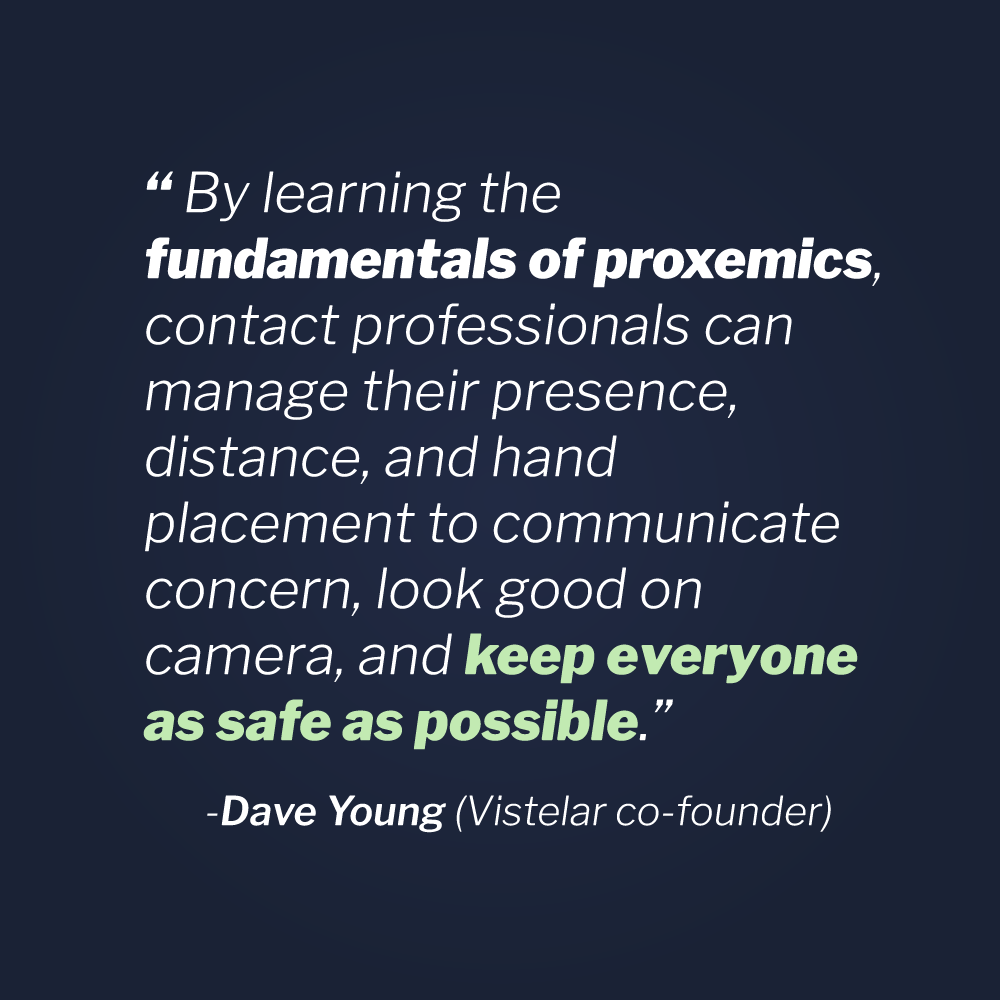Although much of crisis intervention or de-escalation concentrates on the spoken word, the reality is often what we say is not nearly as important as how we say it. When angry or frightened people can’t comprehend what we’re saying with our mouths, they can still listen and respond to what we say with our hands and other body language.
Most interpersonal communication is nonverbal. However, in this technological age, people are beginning to lack nonverbal communication skills; as we become more connected through electronic communication, we are becoming empathically discontented.
Language throughout History
Since the first word was spoken on Earth, thousands of languages have evolved. Many of those languages have come and gone, but today more than 6,000 distinct languages are used around the globe. With origins reaching back 5,000 years, Tamil is the oldest spoken language still used by millions of people from India to Singapore today. Despite that, there is still one language family in use that is older than Tamil, and that language family comprises the many and diverse sign languages. These languages are largely comprised of words formed by positions of the human hand. Sign languages vary distinctly in form and dialect yet share some basic universal signs, such as a point of the outstretched hand or index finger in a certain direction for location, or the flattened palm extended toward another person meaning “halt” or “stay back.”
words formed by positions of the human hand. Sign languages vary distinctly in form and dialect yet share some basic universal signs, such as a point of the outstretched hand or index finger in a certain direction for location, or the flattened palm extended toward another person meaning “halt” or “stay back.”
One of the two oldest known works of art ever discovered can be found in a cave in El Castillo, on an island in Spain. It is a sign that someone made around 40,000 years ago. The symbol is written in red ochre, a reddish pigment made from an iron-enriched stone and is merely a tracing or stencil of the author’s hand. The other oldest known work of visual art is also a hand stencil on a cave wall from around the same time, yet there is no chance that it was placed there by the same person. Archeologists consider this hand to be a couple of centuries older and the island it is on is 8,000 miles away from Spain, in Sulawesi, Indonesia. This ancient artform is not altogether uncommon. Hand stencils of this sort are some of the most ancient artifacts created by humankind and are found in caves all around the world.
Bridging Cultural Gaps Using Sign Language
Though the meaning of these signs is open to interpretation, actual sign language has been used for communication between peoples of different spoken languages for millennia, just as the Plains Sign Talk language was widely used on the North American continent by indigenous peoples. Although sometimes a topic of heated discussion, some basic sign language may be the only truly universal language. Among the native populations of the western hemisphere, a similar sign language was used by native peoples speaking 37 different languages with varying dialects, from Mexico to Canada, and from the Pacific to the Atlantic oceans. No spoken language can claim such cross-cultural success.
A modified version of American Sign Language is perhaps the only form of language ever used to converse with another species. The best example of this was a famous gorilla named Koko. Koko was born in 1971, and before passing in 2018, she was thought to have understood over 2,000 spoken words in English and could sign over 1,100 words in American Sign Language.
Beyond the primitive para verbal communication forms of grunts, screams, and facial expressions, hand sign is perhaps the only deliberate “natural” language that’s basic forms have universal meanings, such as the flattened palm extended towards another person meaning “halt.” No matter who you are or where you’re from, the flattened palm extended forward is a visual “word” which means “stay back, don’t come any closer.”
Using Proxemics
The art of proxemics—the use of distance and positioning to facilitate safety and affect behavior—is something all students of Vistelar’s Conflict Management system learn to non-escalate, de-escalate, and stay safe during even high stakes encounters between people, whether they speak the same language or not.
Proxemics is combined with other approaches in Vistelar’s training repertoire, such as reducing stimulation and adapting communication, in efforts to communicate concern, assess threats, reduce the crisis profile, and promote safety—all while looking good on camera. Using these methods of communication, people learn to reinforce the spoken word and communicate clearly and decisively, during moments of conflict and even crisis.
Have you ever asked someone to calm down? Did it work? Probably not. In fact, it more than likely had the opposite effect. One of the foundations of Vistelar’s Crisis Management System is the notion that we can’t tell someone to calm down, but we can lead them down. However, leading people out of stress and into recovery is not a natural response to conflict or crisis. What we “naturally” do is stand too close, talk too fast, talk too loudly, and say too much. With our natural response to stress, we very naturally push someone under stress into crisis. Two of the ways we at Vistelar train others to manage this natural dynamic is through crisis communications (verbal) and the art of proxemics (nonverbal).
One of Vistelar’s founders, Dave Young, puts it this way: “By learning the fundamentals of proxemics, contact professionals can manage their presence, distance, and hand placement to communicate concern, look good on camera, and keep everyone as safe as possible.”
professionals can manage their presence, distance, and hand placement to communicate concern, look good on camera, and keep everyone as safe as possible.”
People trained in the art of proxemics learn to approach people in a manner that prevents and predicts conflict. It is a skill set that keeps practitioners out of trouble when they can’t intervene and manage trouble when they must. It is an art that uses distance, assessment, and trained judgment in a manner that promotes non-escalation.
Think of it this way. De-escalation is what we do and say to keep someone from jumping off a ledge; many training systems claim to teach this. Non-escalation is what we do and say to keep them from climbing on to the ledge in the first place, and only Vistelar’s training system teaches that.
By managing our distance, tone and volume, our facial expressions, and the placement of our hands, we can facilitate both non-escalation and de-escalation. By using one or both of our hands in deliberate ways, we not only can protect ourselves, but we can also create boundaries and make emergency interventions without ever touching the other person. These skills are still part of a pre-planned, practiced response—part of our Respond, Don’t React philosophy of training, at Vistelar.








